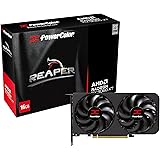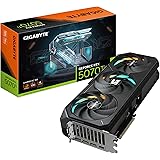The NVIDIA TITAN V, released in late 2017, was a landmark graphics processing unit (GPU) that pushed the boundaries of what was possible in both high-performance computing and consumer-grade hardware. Marketed not as a gaming card but as a high-end solution for researchers and developers, the TITAN V was built on the NVIDIA Volta architecture. It offered unparalleled computational power at the time, making it a subject of immense interest across various fields, from artificial intelligence to cryptocurrency mining. Its specifications, including a large number of CUDA cores, Tensor Cores, and high-bandwidth memory, set a new standard for GPU capabilities.
Architecture and Specifications
The core of the TITAN V’s capabilities lies in its Volta architecture. Volta was designed to enhance performance in both traditional GPU tasks and, more importantly, in the emerging field of deep learning. The architecture includes several key improvements over its predecessors:

Performance in Cryptocurrency Mining
Beyond its intended use in scientific research and AI development, the TITAN V quickly gained attention in the cryptocurrency mining community. Its powerful architecture made it an attractive option for mining various cryptocurrencies, although its high price point meant it was primarily used by serious miners and early adopters.
The provided data includes hashrates for various other cryptocurrencies, showcasing the TITAN V’s versatility. However, the profitability and efficiency of mining these currencies would vary depending on market conditions, mining difficulty, and electricity costs.
Overclocking and Power Consumption
Overclocking the TITAN V could significantly improve its mining performance, but it also came with increased power consumption and heat generation. The provided overclocking settings offer a glimpse into how miners attempted to optimize the card for different algorithms:
Impact on High-Performance Computing
The NVIDIA TITAN V’s impact extends far beyond cryptocurrency mining. Its architecture and specifications made it a valuable tool for researchers and developers in various fields:
Legacy and Future Developments
The NVIDIA TITAN V represents a significant milestone in the evolution of GPU technology. It demonstrated the potential of GPUs for not only gaming but also for high-performance computing and AI. The innovations introduced with the Volta architecture, such as Tensor Cores, have become standard features in subsequent NVIDIA GPUs, including the RTX and A series.
Looking ahead, the trend of GPUs becoming more specialized for AI and other high-performance tasks is likely to continue. NVIDIA and other manufacturers are constantly developing new architectures and technologies to further improve GPU performance and efficiency. The future may see even greater integration of GPUs in fields such as autonomous driving, virtual reality, and personalized medicine.
Influential Individuals in GPU Technology
Several individuals have significantly contributed to the development and popularization of GPU technology. Jen-Hsun Huang, the CEO of NVIDIA, has been instrumental in guiding the company’s vision and innovation in GPU technology. His leadership has led to the development of groundbreaking products like the TITAN V and the expansion of GPUs into diverse fields.
The NVIDIA TITAN V was a groundbreaking GPU that showcased the potential of the Volta architecture. While it found use in cryptocurrency mining, its primary impact was in high-performance computing, particularly in artificial intelligence and scientific research. Its legacy continues to influence the development of GPU technology, with innovations like Tensor Cores becoming standard features in modern GPUs. As technology advances, GPUs will likely play an increasingly important role in various fields, driving progress and innovation across industries.
Nvidia TITAN V Specifications :
- Architecture : NVIDIA Volta
- Tensor Cores : 640
- CUDA Cores : 5120
- Boost Clock : 1455 MHz
- Frame Buffer : 12 GB HBM2

- Ethereum Mining Hashrate : 69 MH/s
OverClocking Hashrate : 82 MH/s
- Zcash Mining Hashrate : 750 sol/s
OverClocking Hashrate : 870 sol/s
- Monero Mining Hashrate : 2650 H/S
OverClocking Hashrate : 3600 sol/s
- KECCAK Mining Hashrate : 1859.4 MH/s
- NIST5 [ Bulwark (BWK) ] Mining Hashrate : 114.23 MH/s
- NeoScrypt [ (ORB) & (PXC) & (FTC) & (INN) & (GBX) & (TZC) & (VIVO) & (CRC) ] Mining Hashrate : 2.61 MH/s
- Lyra2REv2 [ (XVG) & (VTC) & (MONA) ] Mining Hashrate : 55.23 MH/s
- DaggerHashimoto [ EtHash : (ETH) & (ETC) ] Mining Hashrate : 79.75 MH/s
- Decred (DCR) Mining Hashrate : 6.84 GH/s
- Cryptonight [ (XMR) & (XDN) ] Mining Hashrate : 1.45 kH/s
- Lbry ( LBC ) Mining Hashrate : 0.72 GH/s
- Equihash [ (ZEC – ZEN – ZCL) & (BTG) & (KMD) & (HUSH) ] Mining Hashrate : 884.52 Sol/s
- Pascal [ (PASC) & (PASL) ] Mining Hashrate : 3.16 GH/s
- SIACOIN (SC) Mining Hashrate : 4.34 GH/s
- BLAKE2S Mining Hashrate : 10.45 GH/s
GTX TITAN V OverClocking Settings :
- Power :
- Ethereum : 120%
- Zcash : 65%
- Monero : 85%
- Core : +0
- Memory : +155
Power Consumption : 250 Watt/Per Hour




